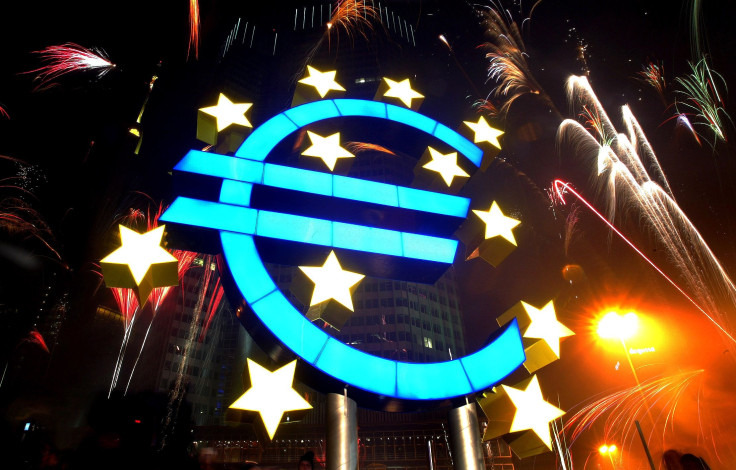Euro Zone Inflation Is Approaching Zero And Economists Are Worried; Here's Why

The inflation rate in the 18-member euro zone slipped last month to mere 0.8 percent annually, Eurostat said Tuesday, down from 0.9 percent in November and an all-time low that has economists worrying about the possible onset of deflation.
While most people are familiar with inflation as a broad-based rise in prices, fewer are familiar with deflation, which is a broad-based decline in prices. On the surface, lower prices should be a good thing -- and in some cases they are -- but once an entire economy falls into deflation, a series of self-reinforcing forces grinds down economic activity.
Deflation is also scary for another reason: It's much harder to stop than inflation, which can be choked off simply by hiking interest rates. Japan, for example, has spent a decade trying to break its deflationary cycle.
There are several reasons why a deflationary drop in prices is dangerous. For one thing, as prices fall people tend to delay purchases in the very reasonable hope of getting a lower price later. But as more and more people adopt that approach, spending plummets, businesses suffer or go bankrupt, unemployment rises and tax revenue declines. For another thing, as prices fall the value of debt actually rises and that forces debtors to divert financial resources into paying off ever more burdensome obligations rather than investing or spending. That reduced spending and investing saps an economy's strength, which contributes further to its slowing down.
The good news, for Europe, is that not every country that uses the euro is flirting with deflation.
While the inflation rate in the euro area overall has been shrinking, it remains positive. Prices are just growing by smaller amounts each year. In December 2012, the inflation rate was 2.2 percent, but this year it’s just 0.8 percent. The decline is being driven by a few struggling members of the euro zone.

Countries listed at the bottom of the chart above, like Germany, Finland and Estonia, have an inflation rate that most economists see as ideal because it is close to 2 percent, which also is the target inflation rate of the U.S. Federal Reserve. At that level, the economy is growing at a sustainable pace, businesses are growing and jobs are being created.
But countries at the top of the chart are struggling. In fact, Greece's economy is deflating, with an inflation rate of negative 2.9 percent. This means a one-euro cup of coffee in Athens costs just 0.97 euros today. Other peripheral countries such as Italy and Portugal have such low inflation rates that they are in effect flirting with deflation.
“These economies, they’re trying to reduce their debts, relative to their overall (gross domestic product) and economic activity,” said Jonathan Lonyes, European expert at Capital Economics in London.
One way of fighting deflation as well as a falling inflation rate is to cut interest rates. The idea is to make it less expensive to borrow and thus encourage economic activity. That's what the European Central Bank has been doing lately. As of Nov. 13 the euro area's benchmark marginal lending facility rate was a relatively low 0.75 percent. Just two years ago it was 2.25 percent. Meanwhile, the ECB's deposit facility, the rate at which banks can borrow from the central bank, was 3.25 percent as recently as 2008. Today it's zero.
Every month, the leaders of the ECB meet to discuss their plans. Their next meeting is this Thursday, and despite the inflation problems, they're not expected to make any changes, at least for now. They also have to worry about the strength of the euro exchange rate.
"If the economy remains sluggish they'll be pressured to respond," Lonyes said.
The ECB has predicted inflation will rise to 1.1 percent this year ando even 1.3 percent in 2015, which may be optimistic. But Capital Economics forecasts that rates will be well below these predictions. "The reality is that there is a pretty strong downward trend in place, and it doesn't show any sign of easing for now," Lonyes said.
© Copyright IBTimes 2025. All rights reserved.





















